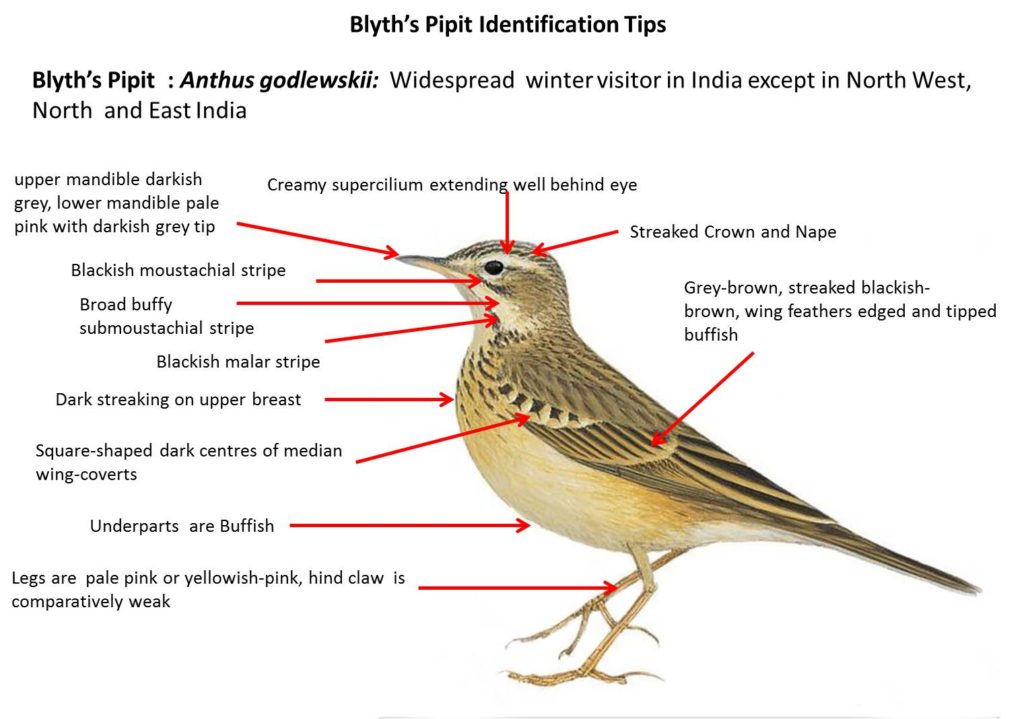Blyth’s Pipit

Blyth’s Pipit Anthus godlewskii
Etymology :
- Anthus : Based on Greek mythology. Anthus, son of Antinous and Hippodamia, was killed by his father’s horses and metamorphosed into a bird which imitated the neighing of horses but fled at their sight
- Godlewskii : Named after Polish naturalist WiktorWitoldGodlewski (1831–1900)
Vernacular Names:Hindi: Chillu, Ragail, Charchari, M.P.: Suriam, Serwi, Chanchir, Ta: Pullapuraki, Nettai-kali, Te: Gurapa-modi-pitta, Mar: Blyth Chi Tirchimany
Distribution in India: Widespread winter visitor except North, North West and parts of East India.
Description:Size of 15–17 cm; wt. of 17–30·5 g. It has unmarked pale lores, creamy supercilium extending well behind eye, thin blackish moustachial stripe, broad buffy submoustachial stripe, narrow blackish malar stripe and malar patch;. It is grey-brown above and streaked blackish-brown;the wing feathers are edged and tipped buffish forming two indistinct pale wingbars. The tail is blackish-brown, edges of central feather pair are tinged rufous, outer two pairs are edged and tipped buffy and with outer web and much of distal inner web is white. It is buffish below, more orange-buff on flanks, vent and undertail-coverts, pronounced dark streaking on upper breast; axillaries and underwing-coverts are orange-buff; iris is dark brown; upper mandible is darkish grey, lower mandible is pale pink with darkish grey tip; legs are pale pink or yellowish-pink, hind claw has a medium length of 13 mm and comparatively weak. Both the sexes are alike. The juvenile is less extensively dark-streaked, has white feather tips giving scalloped appearance, wingbars are whiter and more prominent.
Habitat: It breeds on dry rocky mountain slopes, usually with little vegetation, and stony or gravelly steppes. In non-breeding season it is found in open country, from dry paddy fields, grassland and fallow fields to edges of cultivation; often in swampy areas on migration.
Food habits: It eats small insects, other invertebrates and seeds. Forages on the ground, picking small items from surface; behaviour much as that of other grassland pipits.
Breeding habits: They breed in May in Mongolia. In the display flight they rise up, hover while singing, and then descend steeply to ground. The nest is a well-camouflaged grass cup built on ground. They lay a clutch of 3–5 eggs. The incubation is done by female for a period of 12–14 days.